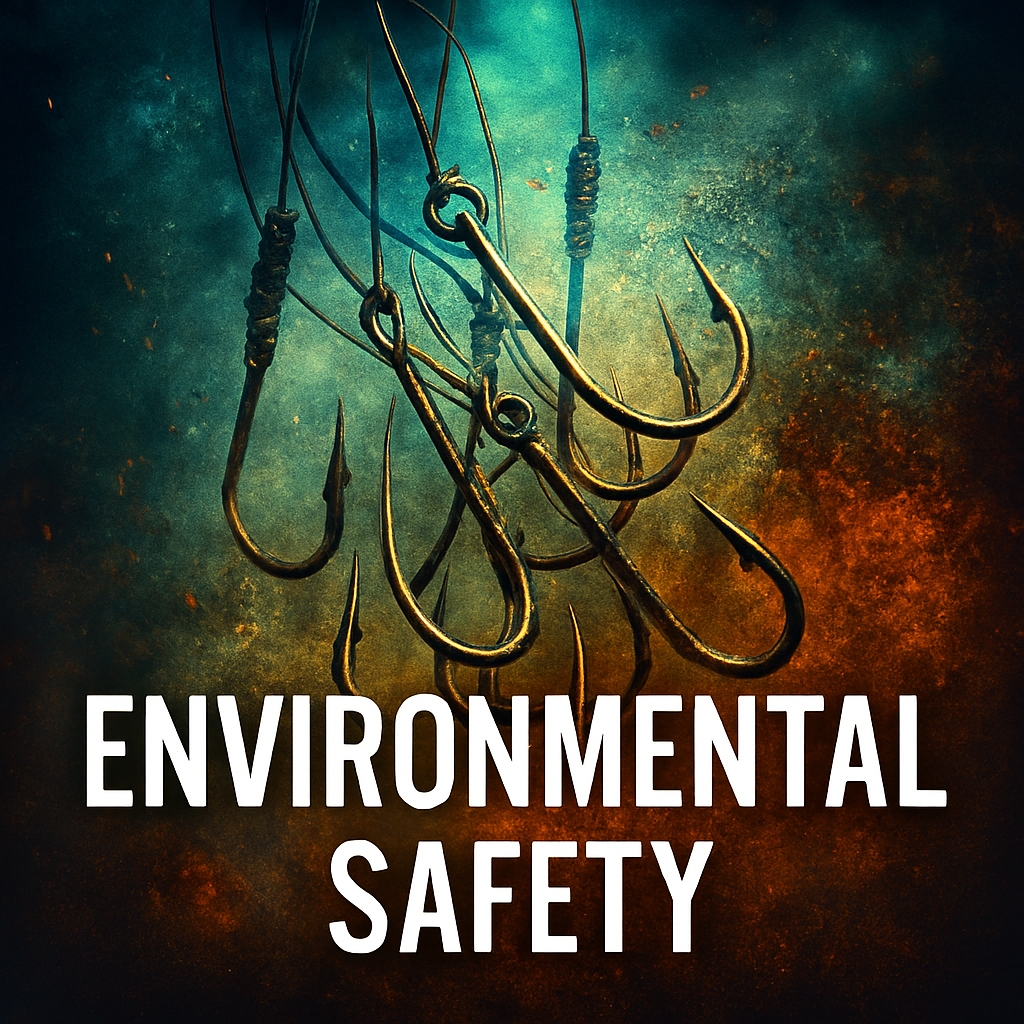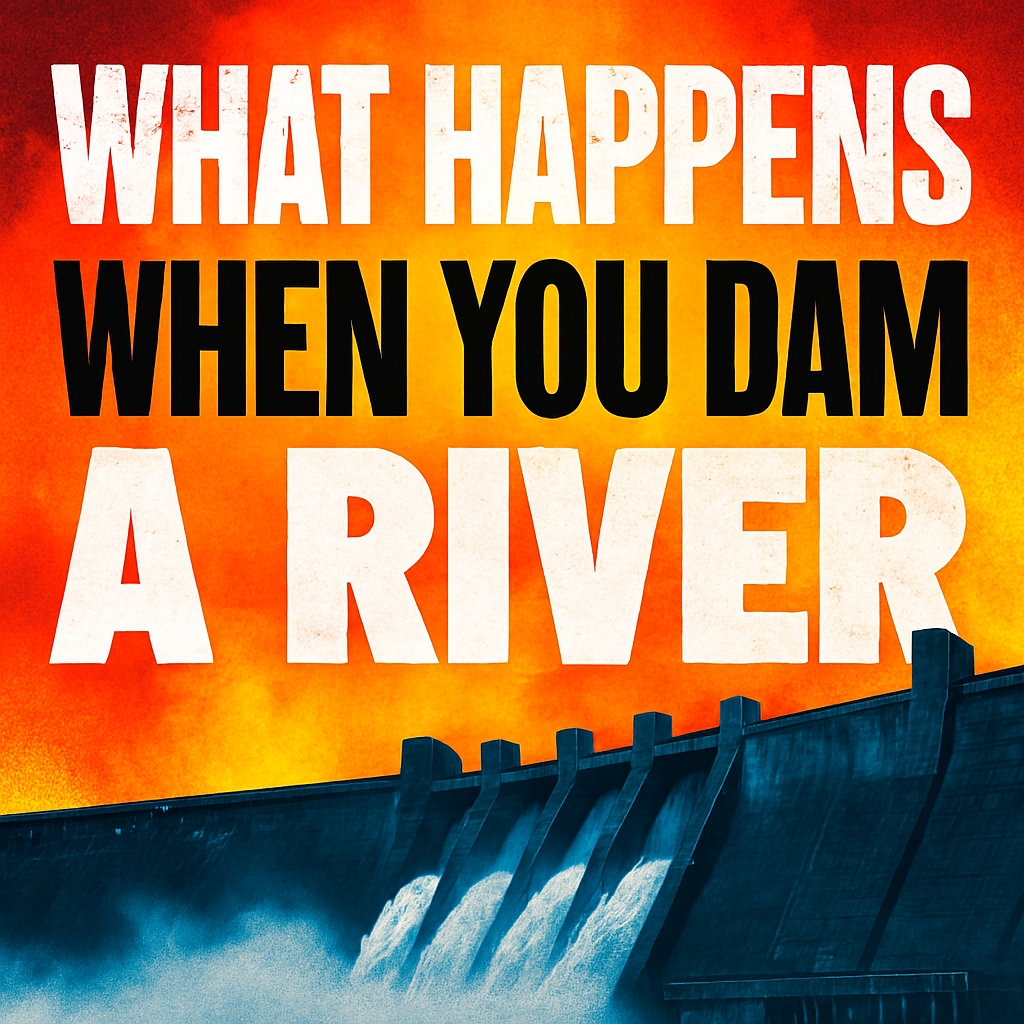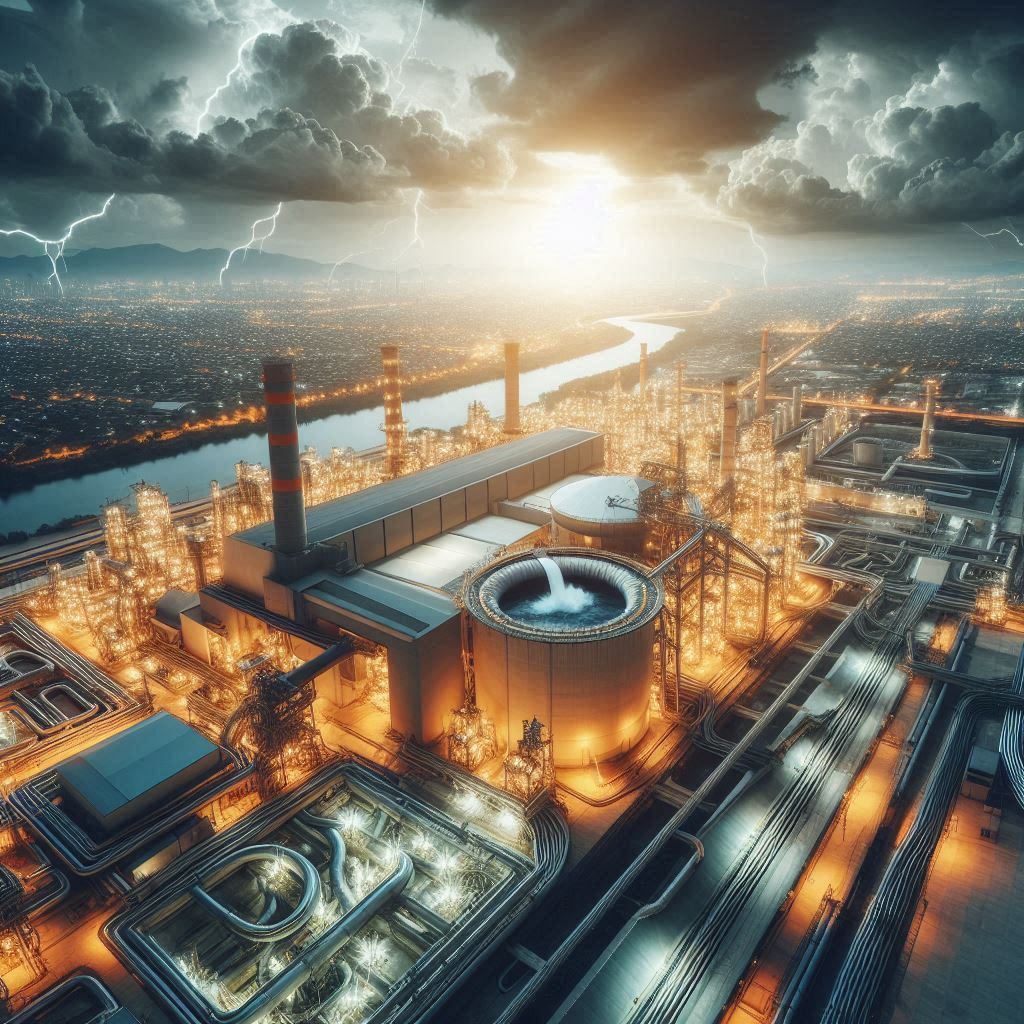Water Integrity – Understanding the Immediate and Lasting Effects of Purity and Pollution
Water as a Mirror of Time and Impact
Water is more than a resource—it is a living archive of ecological choices. Every drop reflects the health of its surroundings, the urgency of its condition, and the legacy it leaves behind. Clean water supports life instantly and sustains it over generations. Dirty water harms organisms quickly and erodes ecosystems slowly. The short-term effects of water quality are often visible—illness, avoidance, and disruption. The long-term effects are quieter but more devastating—extinction, collapse, and irreversible damage. Water purity is not just about clarity or taste. It is about chemical balance, biological safety, and ecological continuity. Animals respond to water quality with instinct. Humans must respond with stewardship.
What Makes Water Clean – The Anatomy of Safety
Clean water is defined by its absence of harm. It contains balanced minerals, safe oxygen levels, and no toxic compounds. It supports hydration, digestion, and reproduction. It does not irritate skin or disrupt metabolism. It is free from pathogens, heavy metals, and synthetic chemicals. It has a neutral pH and low turbidity. It smells fresh and appears clear. It supports microbial balance and aquatic biodiversity. It does not promote algal blooms or parasite outbreaks. It flows naturally and oxygenates itself.
Clean water is biologically compatible and chemically stable. It supports short-term health and long-term resilience. It allows species to thrive without stress. It enables ecosystems to regenerate. It reflects ecological integrity and human care. Clean water is not passive—it is actively maintained. It requires filtration, protection, and monitoring. It is shaped by geology, climate, and behavior. It is the foundation of sustainable life.
Clean Water Effects – Short-Term vs. Long-Term
| Timeframe | Short-Term Effects | Long-Term Effects |
|---|---|---|
| Biological Health | Hydration, digestion, reproduction | Population stability, genetic health |
| Ecosystem Function | Oxygenation, microbial balance | Biodiversity, resilience |
| Visual/Sensory | Clarity, freshness, flow | Habitat preservation, aesthetic value |
| Behavioral Response | Drinking, bathing, spawning | Migration patterns, species survival |
| Human Impact | Safe consumption, recreation | Public health, economic stability |
What Makes Water Dirty – The Anatomy of Harm
Dirty water contains substances that disrupt life. It may look clean but carry invisible threats. Pathogens like bacteria and viruses cause disease. Heavy metals damage organs and reproduction. Pesticides and pharmaceuticals alter hormones and behavior. Excess nutrients trigger algal blooms and oxygen loss. Plastic particles accumulate in tissues. Dirty water smells foul and appears cloudy or discolored. It irritates skin and disrupts digestion. It causes fish to suffocate and amphibians to deform.
It promotes fungal growth and parasite outbreaks. It destabilizes microbial communities. It reduces biodiversity and increases mortality. Dirty water spreads through runoff, waste, and neglect. It reflects ecological imbalance and human impact. It harms quickly and lingers silently. It requires urgent intervention and long-term restoration. Dirty water is not just a symptom—it is a signal. It warns of systemic failure and ecological collapse.
Dirty Water Effects – Short-Term vs. Long-Term
| Timeframe | Short-Term Effects | Long-Term Effects |
|---|---|---|
| Biological Health | Illness, irritation, reproductive failure | Extinction, genetic damage |
| Ecosystem Function | Oxygen loss, microbial imbalance | Collapse, invasive species |
| Visual/Sensory | Murkiness, odor, stagnation | Habitat degradation, loss of beauty |
| Behavioral Response | Avoidance, aggression, stress | Migration loss, behavioral extinction |
| Human Impact | Disease outbreaks, water bans | Infrastructure strain, economic loss |
Immediate Biological Responses to Water Quality
Animals react quickly to water conditions. Fish swim away from contaminated zones. Amphibians abandon breeding sites. Mammals refuse to drink or show signs of illness. Birds change bathing and feeding behavior. Insects fail to reproduce in toxic water. Reptiles develop skin lesions and digestive issues. Aquatic mammals suffer organ damage and reproductive failure. Behavioral changes signal ecological distress. Clean water supports normal activity and reproduction.
Dirty water causes avoidance, aggression, and lethargy. Animals rely on sensory cues—taste, smell, and texture. Contaminants disrupt these cues. Some species adapt temporarily but suffer long-term harm. Water quality affects social behavior and group dynamics. Predation patterns shift due to habitat loss. Nesting and feeding routines collapse. Animal health reflects water health. Monitoring behavior reveals contamination. Clean water restores natural rhythms and instincts.
Purity and Pollution
Long-Term Ecological Consequences
Contaminated water reshapes ecosystems over time. Fish populations decline and disappear. Amphibians suffer generational deformities. Birds ingest toxins and pass them to offspring. Insects lose breeding grounds and food sources. Plants absorb pollutants and become toxic. Microbial balance collapses, promoting disease. Coral reefs bleach and die from chemical exposure. Wetlands lose filtration capacity.
Rivers become biologically dead zones. Lakes turn into algal-dominated basins. Forests lose hydration and soil stability. Polluted water travels downstream, affecting distant habitats. Biodiversity shrinks as species disappear. Food chains collapse from bottom to top. Migratory patterns shift due to water scarcity. Invasive species thrive in degraded conditions. Restoration becomes costly and slow. Ecosystem services vanish, including filtration and flood control. Dirty water is not isolated—it spreads ecological harm.
Restoration – Immediate Action and Lasting Repair
Restoring water quality requires both urgent response and long-term planning. In the short term, filtration systems remove visible contaminants. Chemical treatments neutralize pathogens and toxins. Aeration restores oxygen levels for aquatic life. Cleanup efforts remove debris and plastic waste. Public alerts prevent consumption of unsafe water. These actions stabilize conditions and prevent immediate harm. But restoration is not a one-time fix. Long-term repair involves rebuilding ecosystems.
Wetlands must be replanted to filter runoff. Riparian zones need protection from erosion. Polluted aquifers require years of natural cleansing. Policy must evolve to prevent future contamination. Education fosters community stewardship. Monitoring ensures progress and accountability. Restoration is both technical and symbolic. It reflects care, responsibility, and ecological ethics. Clean water is not just restored—it is re-earned. Every intervention is a step toward resilience. Dirty water can be reversed, but only through sustained effort. Restoration is a commitment to future life.
Restoration Timeline – Short-Term vs. Long-Term Actions
| Restoration Phase | Short-Term Actions | Long-Term Actions |
|---|---|---|
| Physical Cleanup | Trash removal, sediment traps | Reforestation, erosion control |
| Chemical Treatment | Chlorination, carbon filtration | Nutrient management, runoff buffers |
| Biological Repair | Microbial inoculation, aeration | Wetland rebuilding, species reintroduction |
| Policy Response | Water bans, emergency alerts | Regulation reform, infrastructure upgrades |
| Community Engagement | Volunteer cleanups, awareness drives | Education programs, citizen science |
Climate and Water – Interlinked Futures
Climate change reshapes water quality across all timelines. Rising temperatures reduce dissolved oxygen. Droughts concentrate pollutants in stagnant water. Floods spread contaminants across landscapes. Sea level rise affects freshwater aquifers. Wildfires introduce ash and chemicals into streams. Shifting rainfall patterns alter water cycles. Heat promotes algal blooms and bacterial growth. Climate stress weakens aquatic ecosystems. Species lose resilience and adaptability. Waterborne diseases increase with warming.
Infrastructure struggles to keep pace. Climate impacts are cumulative and unpredictable. Restoration must be climate-adaptive. Monitoring must include temperature and flow changes. Policy must integrate climate science. Clean water depends on climate stability. Dirty water reflects climate disruption. Water and climate are inseparable systems. Long-term water health requires climate resilience. Short-term fixes must anticipate future shifts.
Species-Specific Needs – Immediate Survival and Generational Health
Different species respond uniquely to water conditions. Fish need oxygen-rich, low-turbidity environments. Amphibians require clean, shallow breeding zones. Mammals need pathogen-free drinking sources. Birds rely on clean water for bathing and feeding. Insects breed in balanced aquatic microhabitats. Reptiles need stable temperature and mineral content. Aquatic mammals require toxin-free, flowing water. Each species has unique tolerance thresholds. Contamination affects species differently. Some are highly sensitive to pollutants. Others adapt but suffer long-term harm.
Restoration must consider species diversity. Testing must reflect biological needs. Habitat design must support water compatibility. Conservation must protect species-specific water sources. Clean water supports biodiversity. Dirty water causes selective extinction. Species needs guide ecological stewardship. Short-term survival depends on immediate purity. Long-term health depends on sustained integrity.
Species Sensitivity – Immediate vs. Generational Impact
| Animal Group | Immediate Needs | Long-Term Vulnerabilities |
|---|---|---|
| Fish | Oxygen, clarity, safe temperature | Reproductive collapse, genetic damage |
| Amphibians | Clean spawning zones, pH balance | Developmental deformities, extinction risk |
| Mammals | Pathogen-free hydration | Organ failure, population decline |
| Birds | Clean bathing and feeding water | Toxin accumulation, migration loss |
| Insects | Balanced nutrients, low toxins | Breeding disruption, food chain collapse |
Symbolism – Water as a Reflection of Time
Water is a symbol of both immediacy and legacy. It quenches thirst in moments and shapes landscapes over centuries. Clean water represents renewal, clarity, and care. Dirty water reflects neglect, imbalance, and decay. Short-term purity offers comfort and safety. Long-term purity offers resilience and continuity. Water flows through rituals, stories, and ecosystems. It connects species, cultures, and generations.
It teaches humility and interdependence. It mirrors the sky and nourishes the soil. It carries memory and possibility. Dirty water warns of systemic failure. It obscures vision and disrupts life. Clean water invites reflection and restoration. It is both literal and poetic. It is a measure of ecological ethics. It is a language of stewardship. Water is not just a resource—it is a relationship. Its condition reveals our values and choices. Protecting water is protecting time itself.

Infrastructure and Governance – Fast Response vs. Future Planning
Water quality depends on infrastructure and governance. In the short term, emergency systems must detect and respond to contamination. Boil-water alerts, mobile filtration units, and rapid testing kits save lives. Municipal systems must isolate polluted zones and reroute clean supply. Infrastructure must be resilient to floods, droughts, and industrial accidents. But long-term water integrity requires visionary planning. Pipes must be upgraded to prevent leaching. Treatment plants must evolve to handle pharmaceuticals and microplastics. Urban design must reduce runoff and support natural filtration.
Governance must enforce pollution limits and protect watersheds. Policy must be proactive, not reactive. Funding must prioritize ecological health over short-term convenience. Water boards must include scientists, community leaders, and indigenous stewards. Infrastructure is not just physical—it is ethical. Short-term fixes prevent disaster. Long-term planning prevents collapse. Water governance is a reflection of collective values.
Infrastructure Priorities – Emergency vs. Strategic
| Focus Area | Short-Term Priority | Long-Term Priority |
|---|---|---|
| Contamination Response | Alerts, mobile filters, isolation | Source protection, system redesign |
| Testing and Monitoring | Rapid kits, field sensors | Integrated networks, predictive data |
| Treatment Technology | Chlorination, UV sterilization | Advanced filtration, bioreactors |
| Urban Design | Drainage control, debris removal | Green infrastructure, permeable surfaces |
| Policy and Oversight | Crisis management, fines | Prevention laws, ecological zoning |
Cultural and Psychological Dimensions – Immediate Impact and Lasting Memory
Water contamination affects more than biology—it affects culture and psyche. In the short term, communities experience fear, distrust, and disruption. Rituals involving water—bathing, cooking, prayer—are interrupted. Children learn to fear the tap. Elders mourn the loss of ancestral springs. But the long-term effects are deeper. Cultural identity tied to rivers and lakes begins to fade. Stories lose their grounding in place. Generational trauma builds around scarcity and illness.
Psychological stress from water insecurity affects mental health. Communities lose cohesion when forced to relocate. Clean water fosters trust, continuity, and celebration. Dirty water breeds anxiety, fragmentation, and silence. Cultural resilience depends on ecological integrity. Water is not just physical—it is emotional and symbolic. Protecting water protects memory, meaning, and belonging.
Cultural Impact – Short-Term Disruption vs. Long-Term Displacement
| Cultural Dimension | Short-Term Effect | Long-Term Effect |
|---|---|---|
| Daily Rituals | Interrupted, replaced, avoided | Forgotten, disconnected |
| Community Trust | Eroded by alerts and illness | Lost through repeated failure |
| Ancestral Connection | Disturbed by contamination | Severed by relocation |
| Psychological Health | Anxiety, fear, confusion | Trauma, depression, disempowerment |
| Cultural Continuity | Paused or adapted | Diluted or erased |
Ethical Frameworks – Urgency and Legacy
Water ethics demand both immediate action and long-term vision. In the short term, ethics guide emergency response. They prioritize vulnerable populations and transparent communication. They demand accountability for spills and failures. They protect life over profit. But long-term ethics shape policy, education, and design. They ask who benefits and who bears the risk.
They challenge extractive industries and short-term thinking. They honor indigenous knowledge and ecological wisdom. Ethics are not abstract—they are embodied in every decision. Clean water is a moral obligation. Dirty water is a breach of trust. Ethics must be built into infrastructure, governance, and culture. They must evolve with climate and technology. They must be taught, practiced, and defended. Short-term ethics save lives. Long-term ethics save futures. Water is a test of our moral architecture.
Ethical Priorities – Immediate vs. Enduring
| Ethical Domain | Short-Term Imperative | Long-Term Imperative |
|---|---|---|
| Emergency Response | Protect the vulnerable, act fast | Build resilience, prevent harm |
| Transparency | Share risks, admit failures | Educate, empower, evolve systems |
| Accountability | Punish negligence, repair damage | Reform structures, restore trust |
| Inclusion | Listen to affected communities | Embed diverse leadership |
| Stewardship | Treat water as sacred | Design for intergenerational care |
Urban Water Systems – Immediate Utility and Future Vulnerability
Urban water systems deliver clean water to millions daily. In the short term, they provide hydration, sanitation, and industrial support. Pipes, pumps, and treatment plants form the backbone of city life. Water enables cooking, cleaning, cooling, and construction. But these systems are fragile. Aging infrastructure leaks and corrodes. Overuse strains reservoirs and aquifers. Pollution from roads and rooftops enters storm drains. Climate stress increases demand while reducing supply.
Long-term vulnerability grows when maintenance is deferred. Cities face water rationing, contamination, and collapse. Urban resilience depends on proactive design. Green infrastructure absorbs runoff and filters pollutants. Smart sensors monitor flow and detect leaks. Public awareness reduces waste and misuse. Urban water systems must evolve to meet future needs. Short-term delivery is not enough. Long-term sustainability is essential.

Urban Water Systems – Present Function vs. Future Risk
| System Component | Short-Term Function | Long-Term Vulnerability |
|---|---|---|
| Distribution Pipes | Deliver water to homes and businesses | Corrosion, leakage, contamination |
| Treatment Plants | Remove pathogens and chemicals | Capacity limits, outdated tech |
| Stormwater Drains | Prevent flooding and surface pooling | Pollution entry, overflow risk |
| Reservoirs | Store clean water for daily use | Depletion, evaporation, sedimentation |
| Public Behavior | Consumption, hygiene, recreation | Waste, overuse, lack of awareness |
Agricultural Water Use – Fast Growth and Slow Depletion
Agriculture relies heavily on water. In the short term, irrigation boosts crop yields. Livestock require clean water for health and productivity. Fertilizers dissolve and spread through water systems. Pesticides are applied with water-based sprays. But long-term use often leads to depletion and contamination. Over-irrigation drains aquifers and rivers. Runoff carries chemicals into nearby ecosystems. Soil salinity increases with poor drainage. Water-intensive crops strain regional supplies. Climate change alters rainfall and growing seasons. Sustainable agriculture must balance short-term gains with long-term health. Drip irrigation reduces waste. Cover crops protect soil and retain moisture. Buffer zones prevent runoff into streams. Water-smart farming supports both food and ecology. Agriculture shapes landscapes and futures. Clean water is essential for both.
Agricultural Water Use – Immediate Yield vs. Lasting Impact
| Agricultural Practice | Short-Term Benefit | Long-Term Risk |
|---|---|---|
| Irrigation | Increased crop production | Aquifer depletion, salinization |
| Fertilizer Application | Rapid plant growth | Nutrient runoff, algal blooms |
| Livestock Hydration | Animal health and weight gain | Contamination from waste |
| Pesticide Spraying | Pest control and crop protection | Toxic residue in water systems |
| Crop Selection | Market demand and profit | Unsustainable water footprint |
Industrial Water Use – Instant Output and Lingering Waste
Industries use water for cooling, cleaning, and processing. In the short term, water enables manufacturing, energy production, and chemical synthesis. It supports steel mills, textile factories, and power plants. But industrial water use generates waste. Effluents contain heavy metals, solvents, and microplastics. Thermal discharge alters aquatic temperatures. Accidental spills poison rivers and groundwater. Long-term contamination persists for decades. Cleanup is costly and complex. Regulations often lag behind technology. Sustainable industry requires closed-loop systems. Water must be reused, recycled, and monitored. Pollution must be prevented, not just treated. Industrial water ethics demand transparency and innovation. Short-term output must not compromise long-term viability.
Industrial Water Use – Immediate Utility vs. Residual Harm
| Industrial Activity | Short-Term Use | Long-Term Consequence |
|---|---|---|
| Cooling Systems | Temperature control for machinery | Thermal pollution, ecosystem stress |
| Chemical Processing | Solvent mixing and reaction control | Toxic discharge, groundwater risk |
| Cleaning and Rinsing | Surface preparation and sanitation | Wastewater overload, residue buildup |
| Textile Dyeing | Color application and fabric treatment | Heavy metal contamination |
| Energy Production | Steam generation and turbine cooling | Water loss, radioactive waste |
Recreational Water Use – Instant Enjoyment and Hidden Costs
Water is central to recreation. Swimming, boating, fishing, and diving offer joy and connection. In the short term, clean water supports health and leisure. Lakes and rivers become community hubs. Beaches attract tourism and economic growth. But recreational use can degrade water quality. Sunscreens and oils enter aquatic systems. Litter and fuel spills pollute shorelines. Overuse leads to erosion and habitat loss. Noise disrupts wildlife and breeding cycles. Long-term degradation reduces biodiversity and beauty. Restoration becomes necessary but expensive. Sustainable recreation respects water’s limits. Education and regulation protect fragile zones. Clean water must remain safe for play and life. Recreation should renew, not exhaust.
Recreational Water Use – Immediate Joy vs. Long-Term Strain
| Recreational Activity | Short-Term Benefit | Long-Term Risk |
|---|---|---|
| Swimming | Health, exercise, relaxation | Chemical contamination, skin issues |
| Boating | Mobility, exploration, tourism | Fuel spills, noise pollution |
| Fishing | Food, sport, tradition | Overfishing, habitat disruption |
| Diving | Adventure, ecological observation | Coral damage, sediment disturbance |
| Beach Use | Social gathering, economic boost | Erosion, litter, wildlife stress |
Conclusion – Water as a Living Timeline
Water is the most honest witness to ecological truth. It responds instantly to contamination and remembers it for decades. Clean water supports life in the moment and sustains it across generations. Dirty water harms quickly and erodes slowly. The short-term effects are visible—illness, disruption, and avoidance. The long-term effects are quieter—extinction, collapse, and irreversible damage.
Restoration is possible, but only through sustained care. Stewardship is not optional—it is essential. Every species, every ecosystem, and every community depends on water integrity. Testing, filtration, and education are tools of resilience. Policy, design, and ethics shape the future of water. Let this guide be a blueprint for ecological clarity. Let every stream, tank, and watershed reflect dignity. Water is life—protect it with knowledge, urgency, and love.
Water as a Living Archive
Water holds memory. It records every spill, every restoration, every choice. It responds instantly to harm and remembers it for decades. Clean water is a gift to the present and a promise to the future. Dirty water is a warning—a rupture in the timeline. Short-term effects are urgent and visible. Long-term effects are quiet and enduring. Restoration is possible, but only through sustained care.
Stewardship is not optional—it is essential. Every species, every ecosystem, and every community depends on water integrity. Testing, filtration, and education are tools of resilience. Policy, design, and ethics shape the future of water. Let this guide be a blueprint for ecological clarity. Let every stream, tank, and watershed reflect dignity. Water is life—protect it with knowledge, urgency, and love.
Join the Discussion
How do you experience water—physically, emotionally, symbolically? Have you seen the short-term or long-term effects of water contamination in your community or ecosystem?
#WaterIntegrity #CleanWaterNowAndForever #EcologicalStewardship #ShortTermWaterHealth #LongTermWaterResilience #SymbolicEcology #SpeciesWaterNeeds #ClimateAndWater #ProtectEveryDrop #ModularWaterWisdom #WaterEthics #CulturalContinuity #RestoreTheFlow

















The Storing Rainwater Instinct For Powerful Plant Care | Daphne's Corner
[…] often comes from distant reservoirs or desalination plants. Rainwater is immediate and intimate. Storage systems include barrels, tanks, and underground cisterns. These systems reflect the gardener’s commitment to sustainability. Tap water use contributes to […]